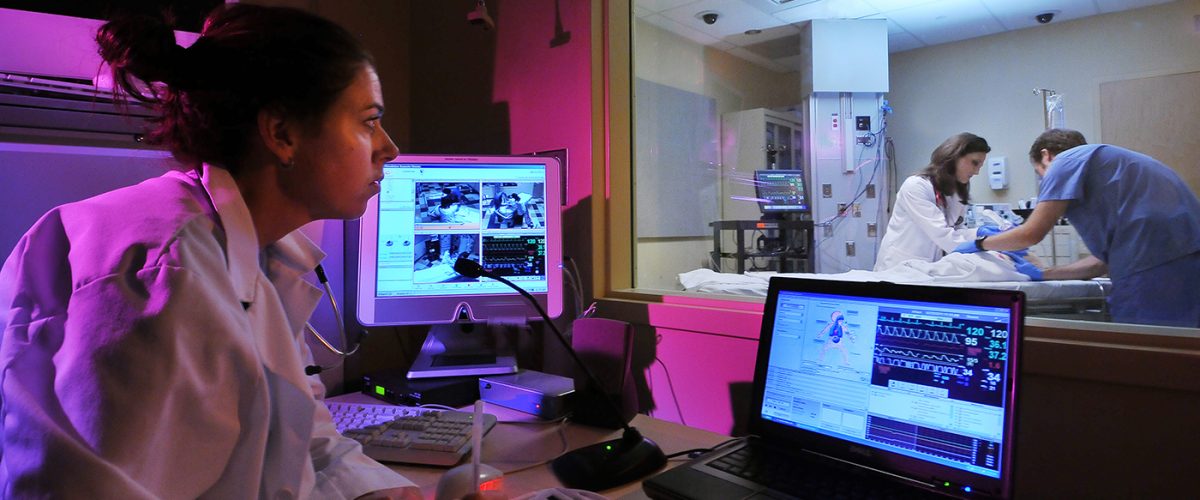Researchers at the University of Colorado College of Nursing are participating in an initiative to improve health care outcomes and efficiencies by using large clinical and administrative data in a pediatric acute care setting. The project was funded by a grant received from Data Science to Patient Value (D2V) from the CU School of Medicine.
D2V is a multidisciplinary research initiative that funds projects focusing on using technology and Big Data and their applications to health care through collaborations with multiple stakeholders, including providers, patients, health systems, payers and policy makers. Also playing key roles in the initiative are the CU College of Nursing and the Colorado School of Public Health (ColoradoSPH).
Using Big Data
The use of Big Data to improve health-care delivery is being studied by Principal Investigator John Welton, PhD, RN, FAAN, and Co-Investigators Marcelo Coca Perraillon, PhD, an assistant professor in the Department of Health, Systems, Management & Policy in the ColoradoSPH and Peggy Jenkins, PhD, RN, assistant professor in the College of Nursing. Their study focuses on developing a database warehouse called the Nursing Value Research Data Warehouse (NVRDW) that collects data for each nurse caring for each patient during hospitalization.
The PI for the study, Welton, states, “This is the largest database of its kind to date detailing the overall care delivered by individual nurses and provides exciting potential to better understand the factors leading to better hospital outcomes of care.”
‘This is the largest database of its kind to date detailing the overall care delivered by individual nurses.’ – John Welton, PhD, RN, FAAN
The NVRDW is a large “pool” of data collected from various sources within multiple organizations that can be used to improve patient outcomes or transform health-care systems and deliver quality care to patients. Additionally, it can be used by researchers as a resource to create innovative strategies that improve patient outcomes.
One of the products from the D2V study is the creation of a consortium of three schools of nursing including the University of Kansas and University of Minnesota to share expertise to collect Big Data across multiple institutions in the future and leverage the expertise developed from the D2V project to improve the quality of care and optimizing nursing care to lower health care costs.
“There is a distinct purpose for data stored in the warehouse, such as research or reporting to improve patient outcomes or transform health-care systems,” said Jenkins. “Because so much data are collected in health-care settings, it is important to resource teams working to standardize the data so it can be compared and used to inform innovation.”
Providing Quality Care
Playing a huge role in the future of health care, Big Data is becoming more important to measure the quality of care provided to patients. Jenkins believes that nurses are just one of many individual interprofessional providers of patient care who can help in improving the quality of health care.
Big Data’s impact on health care |
| With technology becoming more present in the delivery of health-care services, more data is being collected than ever before. From tracking vital signs to discover trends, charting patient care histories through electronic health records, or using multiple patients’ health histories to predict health conditions and create treatment plans, Big Data is being used to reduce costs, create innovative treatments and provide effective care in a timely manner. |
“Interprofessional collaboration of data scientists, informaticians, nurse scientists, nurse leaders, academia, clinical practice sites, and industry is necessary to construct data warehouses,” she said.
Although not all hospitals and health-care settings have large database warehouses, the multidisciplinary work at the CU Anschutz Medical Campus is a step in the right direction. Problems such as incompatible data systems could make it hard to import data to use to improve quality of care. Patient confidentiality can also become an issue. With large amounts of data such as electronic health records being housed in one database, it can make patients’ information vulnerable to a security breech, so it is important to have clear protocols in place to make the data secure.
Additionally, Big Data can create higher-value care that is more efficient, effective, higher quality and more cost effective, which can improve the care patients receive from providers in all sectors of the health field. This is particularly essential to nursing care, Jenkins notes.
“Using new methods, nurses are viewed as unique providers of patient care, and the value of quality nursing care provided divided by costs can be measured,” she said. “There is much to be learned about nurse characteristics and processes contributing to quality patient outcomes.”
Welton adds, “We are at the start of our journey to better understand the inner workings of health care by examining the care of each provider. We know a lot about physician care, but we are just beginning to collect data at the individual nurse-patient unit of analysis.”
The foundational D2V project has started a national dialogue on how to use this work to collect increasingly larger datasets to complement the many efforts to improve future health-care systems.
Guest contributor: This story was written by freelance contributor Katherine Phillips



